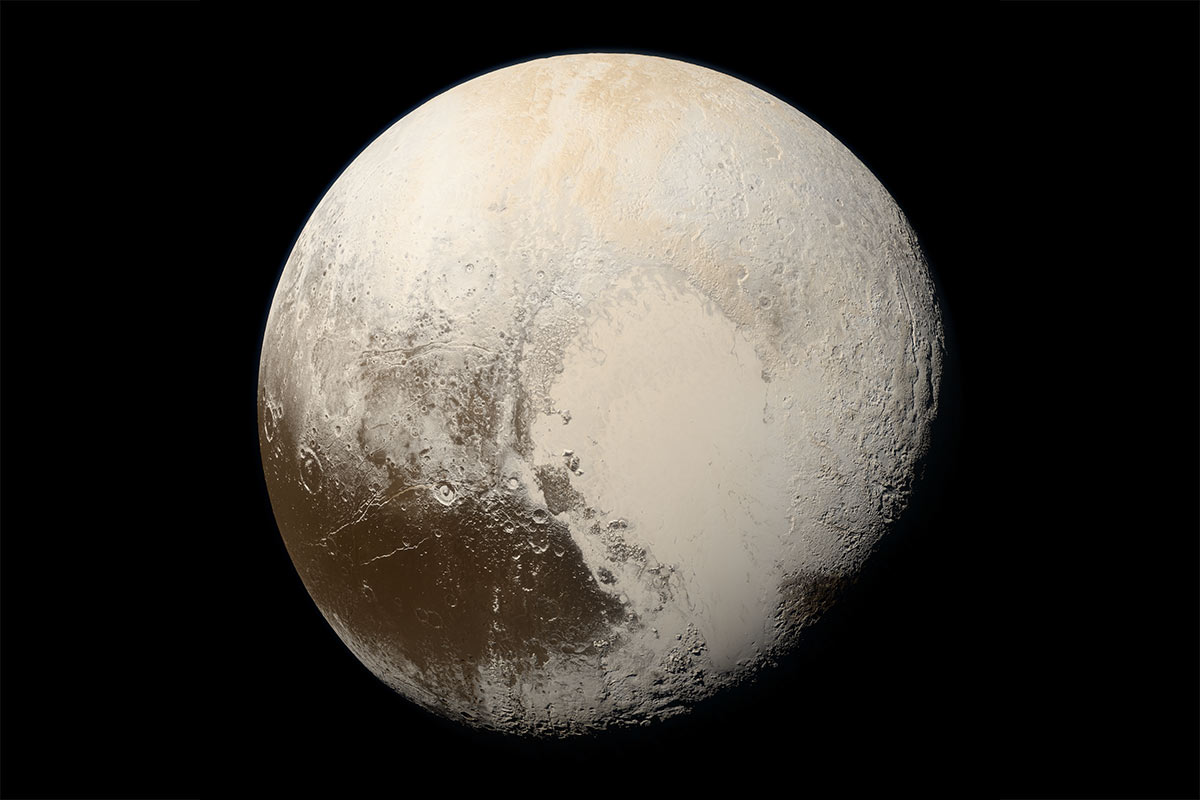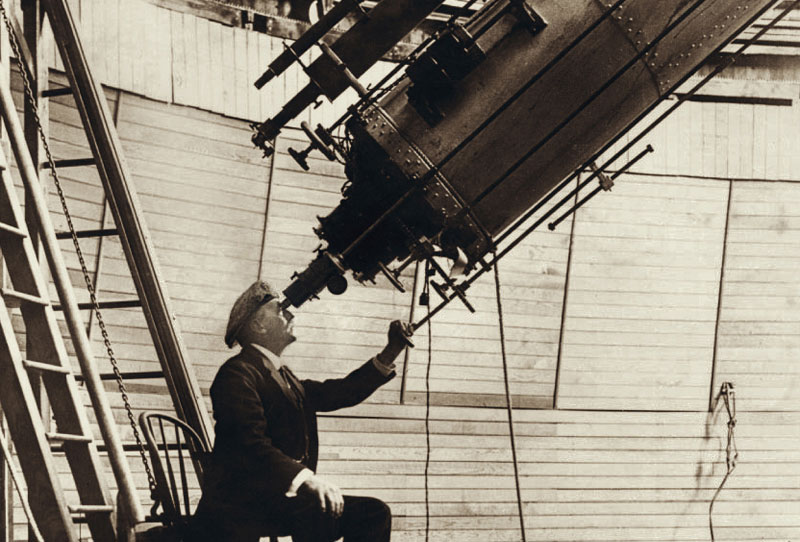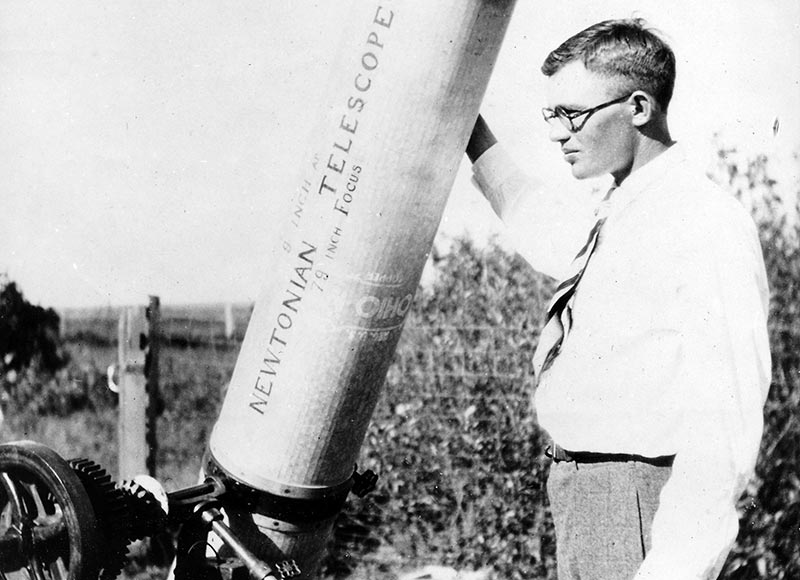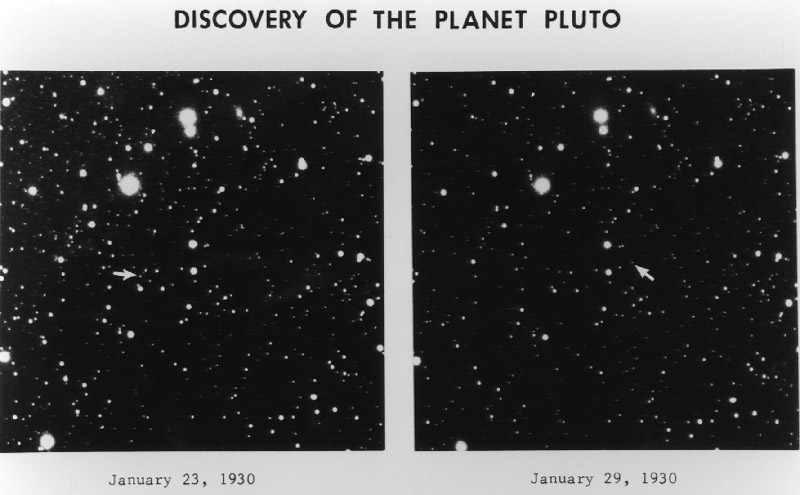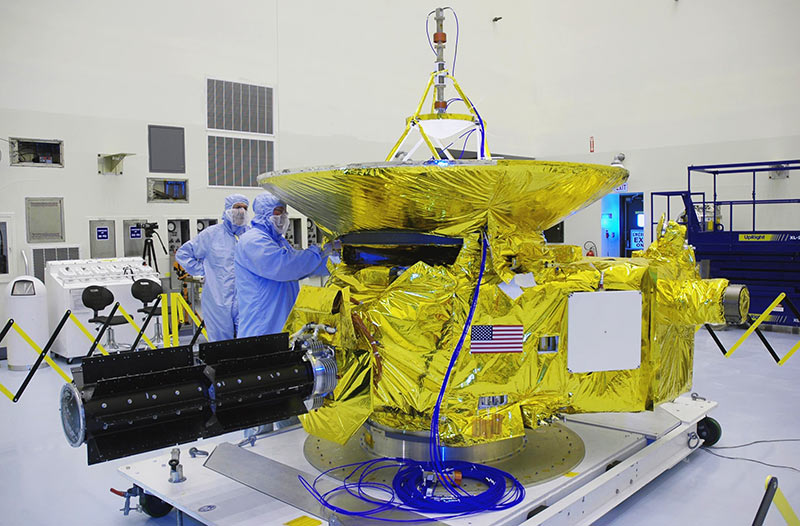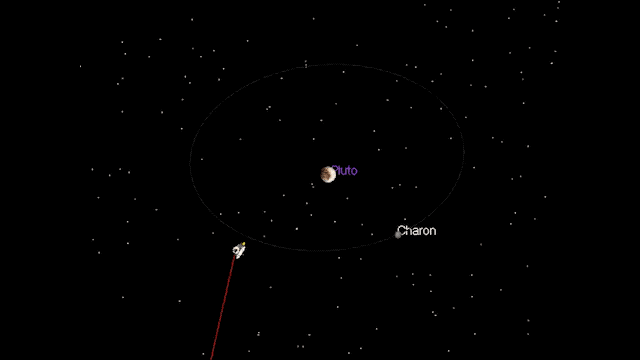A faint little dot that was Pluto
The story of its discovery and exploration
The story of the discovery and reconnaissance of Pluto is an utterly fascinating piece of modern seafaring in space. That not only for the magnificent engineering achievements, which were carried out all along the way, but also because it can make us vividly realise how much there is yet to be learned about our own Solar System.
The picture below is a photograph of Pluto as it was taken by the New Horizons space probe in 2015. This visual testimony with its astonishing level of detail is an extraordinary revelation whose historic significance can only be fully appreciated in the context of a string of research efforts that reach back into the 19th century.
The extend of a blog post is of course not nearly enough to comprehensively summarise this long lasting and entangled history of how Pluto was discovered and explored. Hence, my article can only give a coarse-grained overview and illuminate some arbitrary spots. If you get curious to dive deeper, I recommend the Website of the Johns Hopkins University around NASA’s New Horizons mission, which provides an enormous amount of educational resources and a rich archive of historic information, particularly on the mission itself.
The hunt for “Planet X”
Pluto was discovered by Clyde Tombaugh in February 1930. This wasn’t by mere chance, in fact, the existence of a trans-Neptunian planet had been speculated about for decades already. Back in the day, astronomers noticed that the actual trajectory of Uranus didn’t exactly match up with their mathematical calculations. That led to the anticipation of another, more outward planet, whose gravitational influence was assumed to account for this deviation.
And indeed, Uranus’ neighbour Neptune was discovered almost exactly at its predicted position. However, it was doubted whether Neptune alone would solve that conundrum sufficiently, or whether another planetary term had to be added to the equation. This question was debated controversially and it eventually spurred a man named Percival Lowell to start an extensive research project.
Lowell was descendant of a wealthy business family from Boston and had an educational background in mathematics. After years of traveling the Far East in the late 19th century he fully dedicated himself to astronomy and founded his own observatory in Flagstiff, Arizona in 1894.
One of his primary areas of interest were the surface structures of Mars, which he interpreted to be canals and reservoirs, created by intelligent forms of life as some kind of artificial water supplies. Lowell published three books on that matter, and while his works fueled the public excitement about the possibility of life on Mars, skepticism in the scientific community continued to grow to a degree that eventually damaged his reputation.
Convinced by the existence of a trans-Neptunian object, Lowell initiated a systematic search in 1906 for what he would call “Planet X” – the physically inferred but still unknown planet. His own efforts yielded no success, though, and he died in 1916 without having accomplished his mission.
As an ironic twist of fate it would turn out later that Lowel had actually managed to capture Pluto in one of his countless astronomic photographs – however, he didn’t recognise it: based on his calculations, Lowell was looking out for a brighter object of much bigger size.
In hindsight it would be easy to belittle Percival Lowell’s beliefs and achievements, but considering the state of knowledge and technology at that time, his tenacity and pioneering spirit is nothing short of admirable.
Lowell’s death was followed by turbulent times at the observatory, which put the search for “Planet X” to a halt for a decade. It was resumed with the construction of a new photographic telescope, and 23-year-old Clyde Tombaugh was hired in 1929 to operate it.
Tombaugh was a self-started astronomer, who grew up as the son of farmers in the Midwestern United States. Without having received advanced scientific training up to that point, he managed to build his own telescope at his parents’ house, which allowed him to draw remarkably detailed pictures of Mars and Jupiter. He sent those to the Lowell Observatory in Flagstiff, whose staff – impressed by the accuracy – invited Tombaugh to work there. “An opportunity of a lifetime”, as he would recall later on, that indeed marked the beginning of his lifelong scientific career.
For about a year of tedious work, Tombaugh systematically scanned the night sky through the observatory’s telescope. His job – night in, night out – was to incrementally traverse through the sky, and take a pair of pictures of the exact same section one week apart from each other.
He then had to compare each pair of photographs by means of a so-called blink comparator. This device allowed to project two carefully superimposed images onto a single screen, and flip back and forth between them in rapid succession. That way, Tombaugh eventually was able to spot a faint tiny speck that over time appeared in different positions against its otherwise stationary background – he had discovered Pluto!
The name was proposed shortly thereafter by an 11-year-old girl from England and then taken on unanimously by the observatory’s staff: Pluto, the God of the Underworld in Greek mythology, didn’t just seem to be a fitting metaphor, but its first two letters also happened to match Percival Lowell’s initials.
A shift of perspectives
With a diameter of 2374 kilometers, Pluto is slightly smaller than Earth’s Moon. It orbits in the outer spheres of our Solar System and is so far away that reflected sunlight travels multiple hours before it reaches Earth. To get a grasp of the immense distance, the observation of Pluto can be compared to trying to inspect a classical painting over the distance from San Francisco to New York City.
Considering this, it is rather unsurprising that the gain of knowledge after the initial discovery in 1930 was anything but swift: it was a matter of decades to narrow down Pluto’s exact dimensions, to learn about the composition of its -233°C cold surface, and to improve the image quality from a tiny dot to a blurry blob.
The probably most groundbreaking news in a long time came about in 1978 with the discovery of Pluto’s biggest satellite Charon. Subsequent investigations would show that it is of such substantial proportions that the barycenter of both objects (i.e. the common center point that they both orbit around) is located between them, outside either body, thus making the two of them a so-called binary system. This effect is faintly reminiscent of a pair spin in ice skating, where both partners hold onto each other while rotating around the same axis. As for the name, Charon was the boatman in the Greek mythology, who ferried the deads over to the Underworld.
Another pivotal realisation was the disproof of the “Planet X” theory, which over time became more and more evident. For one, as a relatively small and remote object, Pluto does not have enough gravitational impact on Neptune and Uranus to tug them off course. And apart from that, the physical properties of Neptune had to be revised due to the measurements conducted by the Voyager 2 space probe in the late 1980s, which ultimately rendered the hypothesis of a compensatory body obsolete. While this implicates that the discovery of Pluto was virtually a coincidence, it also happened to open the door to a whole new world – a giant circumstellar disc outwards of the orbit of Neptune, which had been completely unknown up to that point: the Kuiper belt.
The idea of an outer asteroid belt had already been discussed since the 1930s, but its official discovery was long in coming and occurred as recently as in 1992. From then on, a few thousand Kuiper belt objects (KBO) have been found, and their estimated total number goes at least into the hundred thousands. It soon manifested itself that Pluto is not a solitary, standalone planet far out in the void, but that it instead is only one among countless others in the same orbit, some of which with comparable dimensions.
The ensuing reclassification of Pluto as dwarf planet in 2006 encountered some fierce resistance, both in the scientific community and more so in the public. It wasn’t the outgrowth of mere quibbling though, it rather was the consequence of a landmark paradigm shift: the comprehension that the Kuiper belt is a massive and integral structure in our Solar System, which we had been largely unaware of. And hence it appears nit-picky to complain about the need to adjust school book definitions, when there are actually entire chapters yet to be written.
Setting off to new frontiers
Slightly ahead of the Kuiper belt exploration proceeding in the 1990s, scientists and engineers outlined and discussed various scenarios of a space mission to Pluto. Voices lobbying for such an undertaking started to raise in the late 1980s, at about the same time when the Voyager mission was in its final stages. Back in the day, the option for Voyager 1 to perform a Pluto flyby had been decided against in favour of a close flyby of Saturn’s complex and atmosphere-laden moon Titan. But the desire to peek into the pristine world of Pluto remained unabated, and the rapidly expanding interest in the Kuiper belt propelled the endeavours further along.
In 2001, after years of intense scientific and political battle, NASA finally started to worked on a space probe that was named “New Horizons”. The team was led by Alan Stern, an experienced NASA investigator and Pluto enthusiast, who had already been spearheading an informal group in 1989 that called themselves the “Pluto Underground”. Over the subsequent years, a couple of thousand individuals worked on the spacecraft, payload, ground systems and launch vehicle, and the total cost of the mission was north of half a billion US-dollars.
Nine years to the week after Clyde Tombaugh’s death, New Horizons was deployed into space on an Atlas V rocket that launched from Cape Canaveral in January 2006. Pacing outbound at roughly 50,000 km/h for almost a decade before encountering Pluto, it didn’t just carry an array of scientific instruments – the payload also contained a small amount of Tombaugh’s ash.
The journey itself went by the book for the most part, only one severe software incident occurred some ten days before the closest approach and made the engineers’ blood run cold. But despite the signal transmission time of 4½ hours (one-way!), they were able to identify and fix the issue within 2 days.
On July 14th 2015, 5 billion kilometers away from Earth, New Horizons crossed paths with Pluto: for what seems like a blink of an eye, the small planet was virtually within arm’s reach, before the spacecraft inevitably shot off into the void of deep space darkness.
The transfer of the recorded data started almost straight away and allowed for a glimpse behind the curtain shortly afterwards. The first high-resolution photographs were stunningly insightful and exceeded all expectations. Due to the downlink rate of around 1 kbit/sec, however, full data retrieval took more than a year to complete.
New Horizons was a wildly successful mission so far – and it is not yet retired. Its systems are still perfectly healthy and predicted to be operable into the 2030s. Just recently, in January 2019, the spacecraft inspected an asteroid with the nickname Ultima Thule, which orbits in the Kuiper belt and is (at the time of this writing) the most remote object that was ever visited by human means.
Physically speaking, Pluto is still as distant as it always was. But the tiny dot, as which it appeared to us a century ago, has gradually transformed into a tangible and vivid place that was beyond all imagination. And with it, our notion of the Solar System has changed – and will continue to do so, as the studies of the trans-Neptunian space proceed.
Similar to how Percival Lowell hypothesised the existence of “Planet X”, astronomers today are investigating the possibility of yet another massive planet further out that might explain some recent findings. But that is a story for another time.
The reconnaissance of Pluto opened up another fascinating and beautiful part of our cosmos. And it serves as impressive evidence how curiosity inspires humans to incredible achievements in the urge to get a grasp of the world we live in.
-
A true colour photography of the dwarf planet Pluto. Click here to view it in full resolution – it’s thrilling! (Image: Johns Hopkins University/NASA) ↩︎
-
Percival Lowell at work in his own observatory (Image: Wikipedia/PD) ↩︎
-
Clyde Tombaugh with his reflector telescope that he built in 1927 (Image: Johns Hopkins University) ↩︎
-
The two original images proving the existence of Pluto (marked with cursor) (Image: Lowell Observatory/Planetary Society) ↩︎
-
Pluto and Charon as captured by the Hubble Space Telescope in 1994 (Image: NASA/Hubble) ↩︎
-
The New Horizons spacecraft in the laboratory at Kennedy Space Center, a few weeks prior to its deployment (Image: NASA) ↩︎
-
Animation of the Pluto flyby, which is a time-lapse roughly worth an hour of the encounter as it happened in realtime (Image: Johns Hopkins University) ↩︎
